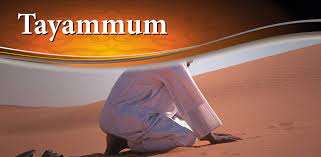
In Islam, no matter where you are, you are needed to be pure internally and externally every time even though there is no water by performing tayammum wudu or ghusl. The term ”Tayammum” is an Arabic word meaning ”Dry” in English. Hence, ”Tayammum Ghusl” is referring to a process of performing ghusl (bathe) without water. In this article, I will show with you how to perform tayammum ghusl step by step.
Do you want to know the causatives of tayammum ghusl or wuduu and how you can perform it? Here, we have discussed how to perform tayammum, dua to say while performing it, reason to perform it, when it is permissible to perform tayammum, et cetera, et cetera.
Someone who has moisture-induced skin inflammation or scaling needs to perform tayammum ghusl or wudu. Or if you can’t find water while it is the time for an obligatory prayer, then you can perform tayammum wudu and pray. Please note that you should not pray two obligatory prayers with one tayammum wudu except if you are ill and cannot touch water because of some harm to your body which will last at least until the time of the next prayer.
Reasons for Tayammum
As it has once said in the Holy Qur’an, our Creator, Allah does not make a task that is hard for His servants except they make it hard for themselves. It is not compulsory to have a water before you can pray, hence, that is why there is tayammum wudu for you. You are advised to perform tayammum wudu when you are in the state of the following statuses, when:
- Obtaining water is hazardous or prohibitively expensive.
- Using water poses a health risk.
- The water available is impure.
- You are not let to use available water.
Read these also:
1. Top best Islamic love messages for your husband (top 40).
2. List of all notable Islamic scholars of our time for all countries in the world.
3. Islamic University of Madinah scholarship 2022.
4. Courses offered at Islamic University of Madinah and their requirements.
5. How to choose a husband in Islam (according to Hadith and Qur’an).
6. Types of janaba bath and how to perform them ony be one.
7. How to perform janaba bath after menstruation or seminal discharge.
8. Why you must have to perform janaba ghusl (man and woman).
If you are in a state of janaba while there is no water, you don’t have to first perform ghusl janaba before you pray, hence, you are advised to perform tayammum wudu and pray but remember to go back and perform janaba ghusl with water when ever you find it without going back to pray the prayers which you have previously prayed. Tayammum wudu is valid only for one obligatory Salah because it cannot remove impurity and it is not the same with Wudhu (ablution). In summary, Tayammum cannot be used for more than one obligatory prayers; however, it is allowed for more than one voluntary prayer (nafl).
Here is how to perform tayammum wudu step by step.
How to perform tayammum wudu
- To perform tayammum wudu, start by saying “In the name of Allah, the most Gracious, the most Compassionate.”
- Then, announce your intention by saying “I am doing tayammum in place of wudu, for the pleasure of Allah and to seek closeness to him.”
- Next, place your hands on the ground, then rub your face by sliding your palms.
- After that, then start praying immediately you finish performing tayammum wudu.
The normal wudu (ablution) is the ritual washing with water by Muslims before prayers while tayammum is the wiping of their face and hands against dust, sand or a clean physical object in place of wudu when there is no water while it is time for prayer.
Here is how to perform tayammum wudu (ablution) in a recommended way step by step:
- First, make Niyyah (intention) in your heart that this act of Tayammum is for the purpose of preparing for Salah, and say: “Bismillah.”
- Strike both hands slightly on pure earth, sand, stone, or concrete.
- Shake off hands to remove debris and wipe the whole face.
- Repeat step step 2 above and wipe the right arm down to the elbow (or only to the wrist) with the left hand and the left arm down to the elbow (or only to the wrist) with the right hand.
Important notes
- Tayammum is not valid without intention.
- Tayammum can only be used when there is a lack of water, or one is unable to come into contact with water due to a sickness.
- It is permissible for both a sick as well as a healthy person who lacks water to perform Tayammum using a wall of mud bricks or stone.
- Tayammum is valid only for one obligatory Salah. Hence, no prayer shall be performed with the same Tayammum.
- According to the Shafi’i Madhhab, tayammum is done only with soil. According to the Hanbali Madhhab, tayammum is done only with soil too.
- Tayammum consists of rubbing one’s hands (no water required).
Conclusion
Please share this article with your friends if you know that it has helped you know how to perform tayammum wudu or ghusl step by step and also remember to subscribe to our newsletter if your like to get related Islamic articles from us in future.
Read this also: how to perform funeral prayer in Islam (step by step).




